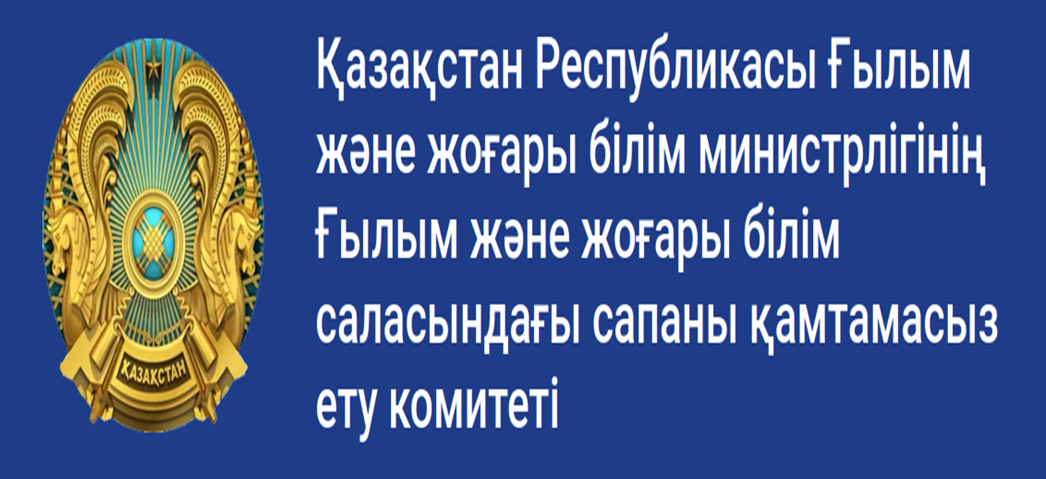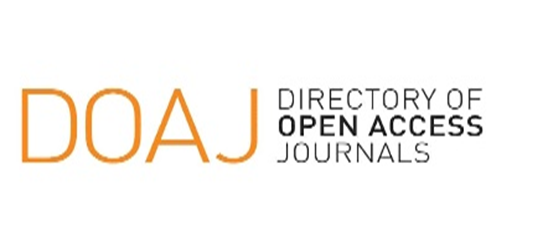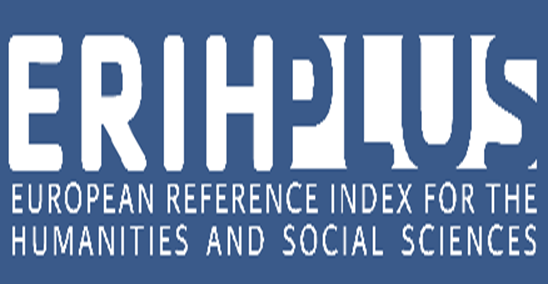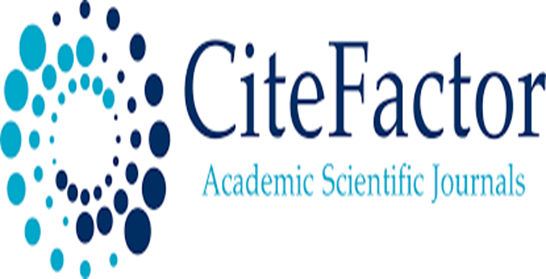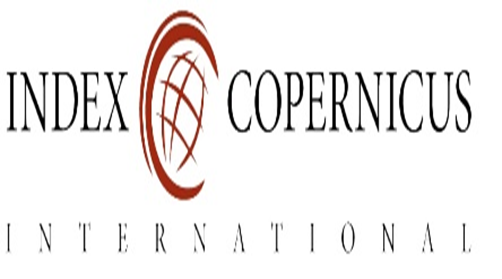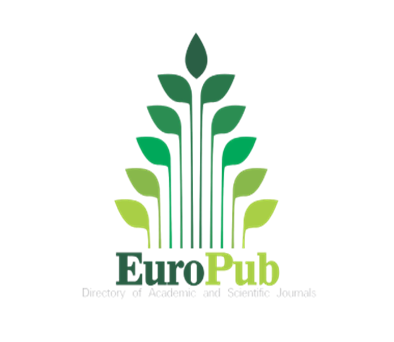Submissions
Submission Preparation Checklist
As part of the submission process, authors are required to check off their submission's compliance with all of the following items, and submissions may be returned to authors that do not adhere to these guidelines.- The submission has not been previously published, nor is it before another journal for consideration (or an explanation has been provided in Comments to the Editor).
- The submission file is in OpenOffice, Microsoft Word, or RTF document file format.
- Where available, URLs for the references have been provided.
- The text is single-spaced; uses a 12-point font; employs italics, rather than underlining (except with URL addresses); and all illustrations, figures, and tables are placed within the text at the appropriate points, rather than at the end.
- The text adheres to the stylistic and bibliographic requirements outlined in the Author Guidelines.
Author Guidelines
- Authors wishing to publish in the journal must register and upload the article on the website tsj.enu.kz
- Languages of publications: English, Kazakh, Russian.
- The volume of the article – 20–55 thousand characters (with spaces), without metadata.
- Scheme of articles construction:
- Full name of the author/authors (if there are two or more authors the *Corresponding author is indicated), center alignment, bold lower-case letters.
- Place of work, city, country; e-mail; center alignment, in italics.
- Article title-centered, without indentation, bold lowercase letters.
- The abstracts volume as well as the summary in a review article in Kazakh and Russian languages should range 300-350 words, in English should range 300-450 words.
- Keywords 10-12 words in all three languages.
- Abstract and keywords in two other languages (authors from near and far abroad can provide this data in English and Russian, and they are translated into Kazakh by the editorial Board of the journal).
- Text of article ..........
- The literature (in the language of the article) and the Reference section should include transliteration and translation of the literature into English.
- In the Reference section, all designations should be in Latin script, without mixing with Cyrillic script.
- The literature should also include publications on the topic of the article over the last three years.
- Information about the author/authors at the end of the article is given in three languages (Russian, Kazakh, English): Full name, academic degree, academic title, university name, address, city, country, ORCID or Scopus ID.
- Use the Microsoft Word editor for Windows to type text, formulas, and tables. Text editor parameters: margins-2 cm on all sides; width alignment; font-Times New Roman, size-12; line spacing-1.15; paragraph indent-1 cm; page orientation-book.
- References to cited works in the text are given in brackets, indicating the first author of the work, year of publication: number of page(s). For example:
- (Samashev, 2022: 45) or (Samashev, 2021: URL);
- If two or more authors:
а) (Samashev et al., 2022: 45) or
- b) (Samashev, Аbayev, Khan, 2022: 45);
- If there is no direct link: (Samashev, 2022).
The font of the list itself is Times New Roman, size-12, the first line of the paragraph-with a protrusion of 1.25 cm, width alignment with hyphenation.
- The list of references is provided in two versions:
1) alphabetically without numbering in the language of the article;
2) Latin transliteration, with the English translation in square brackets.
3) the list of references should not include the following types of sources such as dissertations, abstracts of dissertations, texts of official documents in various publications (decrees, orders, resolutions, programs, etc.), archival sources and data from the author's field materials are indicated in the text of the article in round brackets and should be referenced by automatic footnotes.
All abbreviations of the output data of archival documents are listed separated by commas and indicated with lowercase letters (GA, f. 4, d. 2, p. 16). They are not included in the reference. (see sample: References).
- The requirements apply to review articles and book reviews.
- The article should be thoroughly checked for spelling and syntax errors and technical design. Articles that do not meet the technical requirements will be returned for revision. Returning for revision does not mean that the manuscript has not been accepted for publication.
A SAMPLE OF AN ARTICLE
IRSTI 03.41.91 (defined by the link http://grnti.ru/)
*M. Khabdulinaa
L.N. Gumilyov Eurasian National University, Astana, Republic of Kazakhstan
[1](E-mail: mk_khabdulina@mail.ru).
*Сorresponding author: mk_khabdulina@mail.ru
- Shnaiderb
Institute of Archaeology and Ethnography SB RAS, Novosibirsk, Russian Federation
b(E-mail: sveta.shnayder@gmail.com)
A.Yeginbayc
L.N. Gumilyov Eurasian National University, Astana, Republic of Kazakhstan
c(E-mail: adil_eginbaev2000@mail.ru)
- Karimbayevad
M.K. Ammosov North-Eastern Federal University,Yakutsk, Saha, Russian Federation
d(E-mail: zulxumar63@gmail.com)
The Kazakh farmstead of the ethnographic settlement of Kozykosh
Abstract. The issue of study of the settled culture of nomads in recent decades has been actively developed by various archaeological teams in Kazakhstan. This new field known as paleo-ethnographic got a scientific formalization in the 70s of the XX century. In 2021, excavation soft helater-medieval settlement of Kozykosh of the late XIX – early XX centuries began in Akmola Ishim region. The purpose of this article is to define the planning and compositional structure of the ethnographic settlement of the Kazakhs, to describe the housing and utility complexes, architecture, construction business based on the records of the excavated dwelling No.3, to demonstrate the changes of spatial layout and planning concept of the settlements due to the social and political changes of the early XX century in Kazakhstan. The research materials are based on the archaeological excavations of the housing and utility complex of the farmstead No. 3 of the settlement of Kozykosh; the remote, geophysical, historical and ethnographic methods of study were used for the research. The significance of the excavations of the settlement of Kozykosh lies in the first large-scale experience of obtaining the materials, which confirm and describe the ethnographic information concerning the Kazakh wintering areas.. [300-450 words]
Keywords: Saryarka, Kozykosh, Nura, excavations, settlement, dwelling, farmstead, kystau, turfy bricks [10-12 words/word combinations]
*М. Хабдулинаa
Л.Н. Гумилев атындағы ЕҰУ, Aстана, Қазақстан Республикасы
[1](E-mail: mk_khabdulina@mail.ru).
*Байланыс үшін автор: mk_khabdulina@mail.ru
С. Шнайдерb
РҒА СБ Археология және этнография институты, Новосибирск, Ресей Федерациясы
b(E-mail: sveta.shnayder@gmail.com)
А. Егинбайc
Л.Н. Гумилев атындағы ЕҰУ, Астана, Қазақстан Республикасы
c(E-mail: adil_eginbaev2000@mail.ru)
З. Каримбаеваd
М.К. Аммосов атындағы Солтүстік-Шығыс федералдық университеті, Якутск, Cаха, Ресей Федерациясы
d(E-mail: zulxumar63@gmail.com)
Қозыкөш этнографиялық қонысының қазақ үй-жайы
Аннотация. Көшпенділердің отырықшы мәдениетін зерттеу мәселесін соңғы онжыл-дықтарда Қазақстанның түрлі археологиялық ұжымдары белсенді түрде дамытып келеді. Палеоэтнографиялық деп аталатын бұл жаңа бағыт XX ғасырдың 70-ші жылдарында ғылыми сипатқа ие болды. Қазіргі уақытта жинақталған материалдың көлемі кейінгі орта ғасырлардағы стационарлық ескерткіштерді екі хронологиялық кезеңге бөлуге мүмкіндік береді: Қазақ хандығының XV-XVIII ғғ. және XIX-XX ғғ. этнографиялық уақытының ескерткіштері. Далалық Сарыарқадағы Қазақ хандығы дәуіріне тиеслі қоныстар әзірше белгісіз. 2021 жылы Ақмола өңірінде XIX ғ. аяғы мен XXғ. басындағы Қозыкөш кеш ортағасырлық қонысында қазба жұмыстары басталды.Осы мақаланың мақсаты: Қозыкөш өзеніндегі қазақтардың этнографиялық қонысының жоспарлау-композициялық құрылымына сипаттама беру, қазылған No3 тұрғын үйдің материалдары бойынша XIX ғасырдағы тұрғын үй-шаруашылық кешендерін, сәулетін, құрылыс ісін сипаттау, Қазақстандағы ХХ ғасырдың басындағы қоғамдық-саяси өзгерістерге байланысты қоныстардың (қыстақтардың) кеңістіктік орналасуы мен жоспарлау бейнесінің өзгеруін көрсету... [300-350 сөз]
Кілт сөздер: Сарыарқа, Қозыкөш, Нұра, қазба жұмыстары, қоныс, тұрғын үй, усадьба, қыстау, шымды кірпіштер. [10-12 сөз/сөз тіркесі]
*М. Хабдулинаa
Евразийский национальный университет имени Л.Н. Гумилева, Астана, Республика Казахстан
[1](E-mail: mk_khabdulina@mail.ru).
*Автор для корреспонденции: mk_khabdulina@mail.ru
С. Шнайдерb
Институт археологии и этнографии СО РАН, Новосибирск, Российская Федерация
b(E-mail: sveta.shnayder@gmail.com)
А. Егинбайc
Евразийский национальный университет имени Л.Н. Гумилева, Астана, Республика Казахстан
c(E-mail: adil_eginbaev2000@mail.ru)
З. Каримбаеваd
Северо-Восточный федеральный университет им. М.К. Аммосова, Якутск, Саха, Российская Федерация
d(E-mail: zulxumar63@gmail.com)
Казахская усадьба этнографического поселения Козыкош
Аннотация. Проблема изучения оседлой культуры кочевников в последние десятилетия активно разрабатывается различными археологическими коллективами Казахстана. Это новое направление, известное как палеоэтнографическое, получило научное оформление в 70-х годах ХХ в. К настоящему времени объем накопленного материала позволяет делить стационарные памятники позднесредневековой эпохи на два хронологических периода: памятники периода Казахского ханства XV-XVIII вв. и этнографического времени XIX-XX вв. В степной Сарыарке поселения периода Казахского ханства пока не известны. В 2021 г. в Акмолинском Приишимье начаты раскопки позднесредневекового поселения Козыкош конца XIX – начала XX в. В рамках одного большого памятника, содержащего более 80-ти жилищно-хозяйственных комплексов, вычленяются два этапа развития и трансформации стационарного казахского жилища. Результаты наших раскопок касаются многих сторон хозяйственной деятельности, характеристики исторически сложившихся моделей казахского природопользования... [300-350 слов]
Ключевые слова: Сарыарка, Козыкош, Нура, раскопки, поселение, жилище, усадьба, кыстау, дерновые кирпичи. [10-12 слов/словосочетаний]
MAIN TEXT OF THE ARTICLE
The main text of the article should contain the following structural elements:
– Introduction
– Materials and research methods
– Research background
– Analysis
– Results
– Conclusion
– Abbreviatios
Литература
(design of sample)
Книга: Manz B.F., 1989. The Rise and Rule of Tamerlane. Cambridge: Cambridge univ. рress. 240 p.
Абаев А.К., 2022. Кыпчаки. Алматы. 254 c.
Статья в научном сборнике: Камалов С.К., 1993. О географических названиях в эпосе «Эдиге» // Историко-географические аспекты развития Ногайской Орды. Махачкала: Наука. C. 132-134.
Коллективная монография: Улус Джучи (Золотая Орда). XIII – середина XV в., 2009. Казань: Институт истории АН РТ. 1056 c.
Материалы конференции: Аничкин Л.К., 2011. Золотоордынское наследие // Материалы второй Международной научной конференции «Политическая и социально-экономическая история Золотой Орды», посвященной памяти М.А. Усманова. Казань, 29-30 марта 2011 г. Институт истории им. Ш. Марджани АН РТ. Казань: ООО «Фолиант». 368 c.
Статья в журнале: Мухаметов Ф.Ф., 2007. Монгольская «Яса» и ее роль в системе общественных отношений империи Чингисхана. Turkic Studies Journal. №2. T.11. P. 150-155.
Электронный источник: Сабитов Ж.М., 2015. Золотая Орда — «падчерица» казахстанской историографии // Молодой ученый. T. 104. №24. C. 842-851. [Электронный ресурс] – URL: https://moluch.ru/archive/104/23260/ (дата обращения: 07.09.2020).
Учебное пособие: Логунова Г.В., 2014. Русь и Золотая Орда: проблема взаимовлияния: учеб.пособие. Иркутск: Изд-во ИГУ. 110 c.
Reference
(design of sample)
Book: Manz B.F., 1989. The Rise and Rule of Tamerlane. Cambridge, New York, Port Chester, Melbourne, Sydney: Cambridge univ. press. 240 p.
Article in a scientific collection: Kamalov S.K., 1993. O geograficheskih nazvaniyah v epose «Edige» [About place names in the epic «Edige»]. Istoriko-geograficheskie aspekty razvitiya Nogajskoj Ordy [Historical and geographical aspects of the development of the Nogai Horde]. Nauka. Mahachkala. P. 132-134. [in Russian].
Collective monograph: Ulus Dzhuchi (Zolotaya Orda). XIII – seredina XV v., 2009. [Ulus Jochi (Golden Horde). CHII – middle of SWR c.]. Institute of History of the Academy of Sciences of the Republic of Tatarstan. Kazan’. 1056 p. [in Russian].
Conference materials: Anichkin L.K., 2011. Zolotoordynskoe nasledie. Vypusk 2. Materialy vtoroj Mezhdunarodnoj nauchnoj konferencii «Politicheskaya i social’no-ekonomicheskaya istoriya Zolotoj Ordy», posvyashchennoj pamyati M.A. Usmanova [Golden Horde heritage. Issue 2. Materials of the Second International Scientific Conference «Political and Socio- Economic History of the Golden Horde»]. Kazan. March 29-30, 2011. Institute of History. Sh. Mardzhani AS RT. Kazan: LLC «Foliant». 368 p. [in Russian].
Journal article: Muhametov F.F., 2007. Mongol’skaya «YASA» i ee rol’ v sisteme obshchestvennyh otnoshenij imperii Chingiskhana [Mongolian «YASA» and its role in the system of public relations of the empire of Genghis Khan], Voprosy istorii[history issues]. 11(5). P. 150-155. [in Russian].
Electronic source: Sabitov Zh.M., 2015. Zolotaya Orda – «padcherica» kazahstanskoj istoriografii [Holden Horde – «stepdaughter» of Kazakhstani historiography], Molodoj uchenyj[Young scientist]. 24 (104). P. 842-851. [Electronic resource]. Available at: https://moluch.ru/archive/104/23260/ (Accessed: 7.09.2020). [in Russian].
Tutorial: Logunova G.V., 2014. Rus’ i Zolotaya Orda: problema vzaimovliyaniya: ucheb. posobie. [Rus and the Golden Horde: the problem of mutual influence: textbook]. Irkutsk: Izd-vo IGU. 110 p. [in Russian].
Information about authors:
Khabdulina Maral, Candidate of Historical Sciences, Director of the K.A. Akishev Research Institute of Archaeology, L.N. Gumilyov Eurasian National University, 2 K. Satpayev Str., Astana, Republic of Kazakhstan.
ORCID: 0000-0002-7195-5723
Scopus ID: 57192665106
Shnaider Svetlana, Candidate of Historical Sciences, Senior Researcher, Institute of Archaeology and Ethnography SB RAS, 17 akad. Lavrentiev Aven., Novosibirsk, Russian Federation.
ORSID: 0000-0003-2230-4286
Scopus ID: 56801877800
Еginbai Adil, Master, Researcher, K.A. Akishev Research Institute of Archaeology, L.N. Gumilyov Eurasian National University, 2 K. Satpyaev Str., Astana, Republic of Kazakhstan.
ORCID: 0000-0001-6035-014X
Karimbaeva Zulhumar, Master, Department of Anthropology and Ethnology, M.K. Ammosov North-Eastern Federal University, 42 Kulakovskii Str., Yakutsk, Saha, Russian Federation.
ORCID: 0000-0003-2893-8423
Авторлар туралы мәлімет:
Хабдулина Марал, тарих ғылымдарының кандидаты, директор, Қ.А. Ақышев атындағы археология ҒЗИ, Л.Н.Гумилев атындағы Еуразия ұлттық университеті, Қ. Сәтбаев көш., 2, Астана, Қазақстан Республикасы.
ORCID: 0000-0002-7195-5723
Scopus ID: 57192665106
Шнайдер Светлана, тарих ғылымдарының кандидаты, аға ғылыми қызметкер, РҒА СБ Археология және этнография институты, Акад. Лаврентьев даңғ., 17, Новосибирск, Ресей Федерациясы.
ORCID: 0000-0003-2230-4286
Scopus ID: 56801877800
Еғінбай Аділ, магистр, ғылыми қызметкер, Қ.А. Ақышев атындағы археология ҒЗИ, Л.Н. Гумилев атындағы Еуразия ұлттық университеті, Қ. Сәтбаев көшесі, 2, Астана, Қазақстан Республикасы.
ORCID: 0000-0001-6035-014X
Каримбаева Зулхумар, магистр, антропология және этнология кафедрасы, М.К. Аммосов атындағы Солтүстік-Шығыс федералдық университеті, Кулаковский көш., 42, Якутск, Саха, Ресей Федерациясы.
ORCID: 0000-0003-2893-8423
Сведения об авторах:
Хабдулина Марал, кандидат исторических наук, директор, НИИ археологии имени К.А. Акишева, Евразийский национальный университет им. Л.Н. Гумилева, ул. К. Сатпаева, 2, Астана, Республика Казахстан.
ORCID: https://orcid.org/0000-0002-7195-5723
Scopus ID: https://www.scopus.com/authid/detail.uri?authorId=57192665106
Шнайдер Светлана, кандидат исторических наук, старший научный сотрудник, Институт археологии и этнографии СО РАН, проcп. Академика Лаврентьева, 17, Новосибирск, Российская Федерация.
ORCID: 0000-0003-2230-4286
Scopus ID: 56801877800
Егинбай Адиль, магистр, научный сотрудник, НИИ археологии имени К.А. Акишева, Евразийский национальный университет им. Л.Н. Гумилева, ул. К. Сатпаева, 2, Астана, Республика Казахстан.
ORCID: 0000-0001-6035-014X
Каримбаева Зулхумар, магистр, кафедра антропологии и этнографии, Северо-Восточный федеральный университет имени М.К. Аммосова, ул. Кулаковского, 42, Якутск, Саха, Российская Федерация.
ORCID: 0000-0003-2893-8423
ARTICLES
Политика раздела по умолчанию
Privacy Statement
The names and email addresses entered in this journal site will be used exclusively for the stated purposes of this journal and will not be made available for any other purpose or to any other party.

